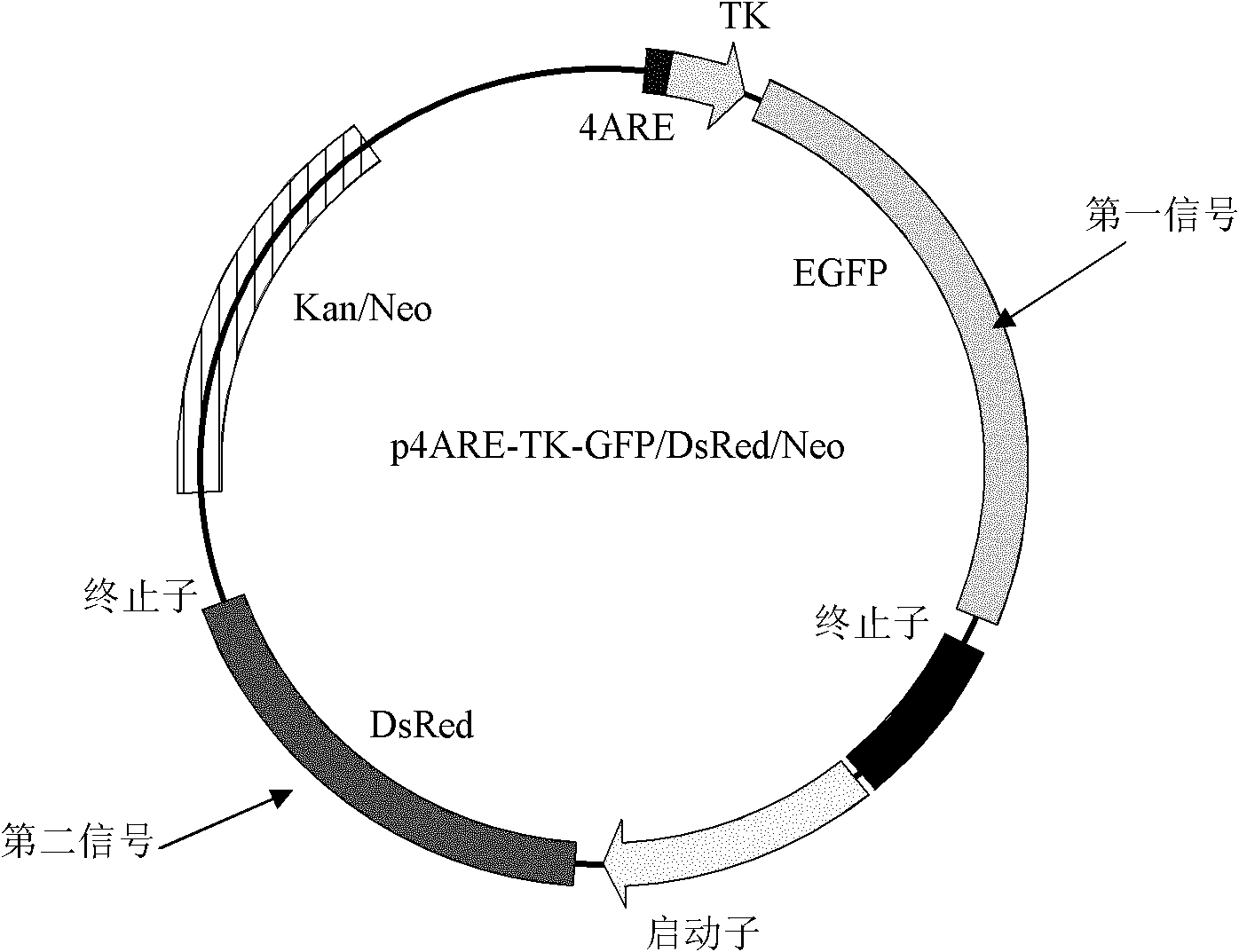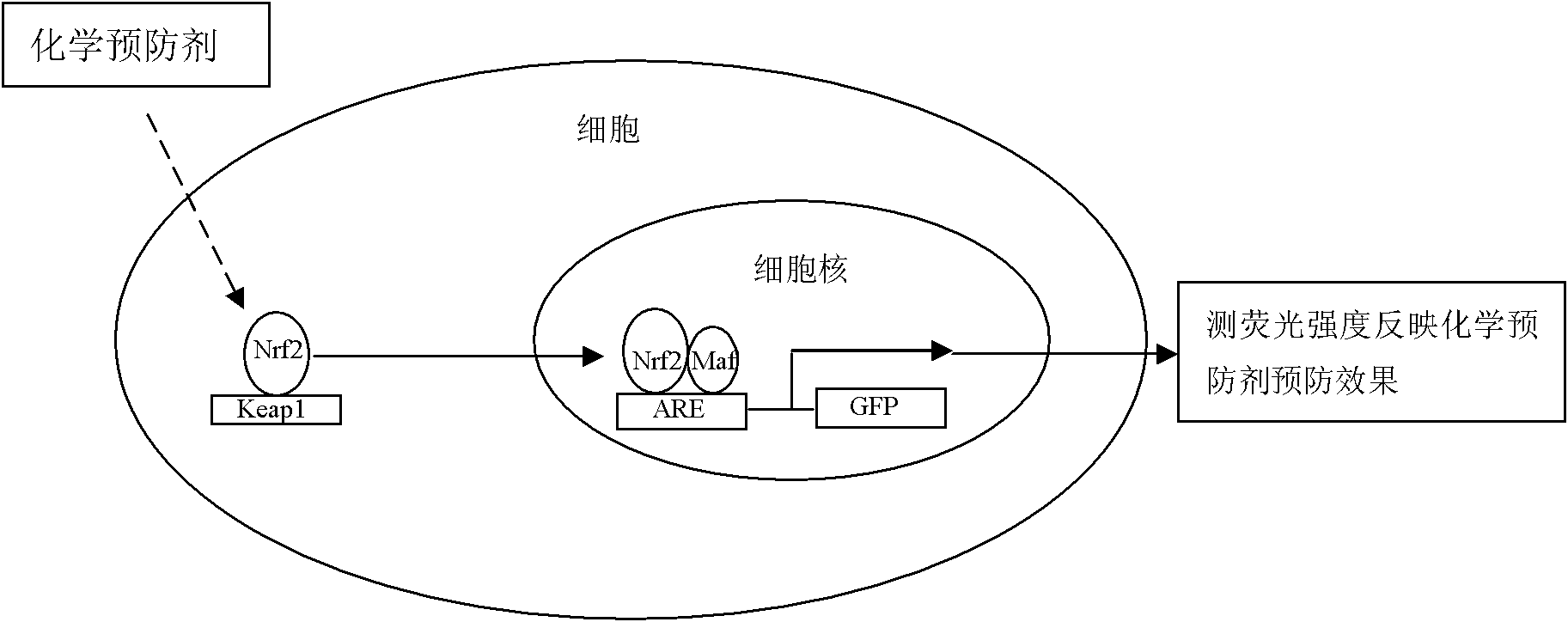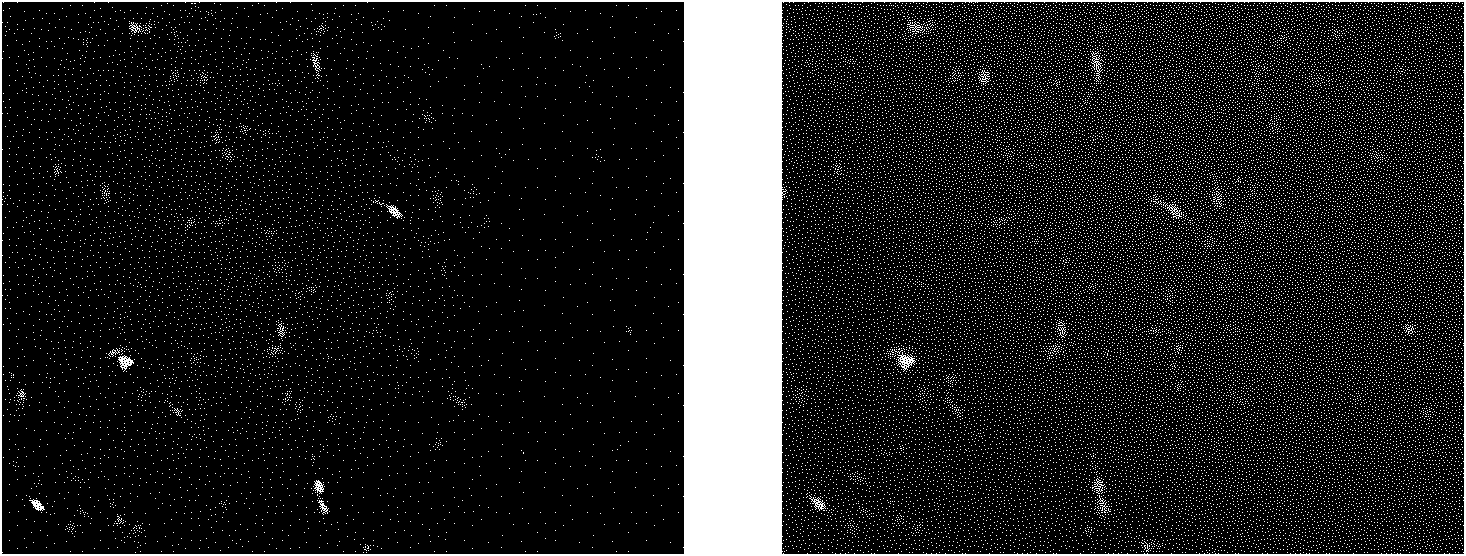Double-signal transgenic cell sensor for screening chemopreventive agent and establishment method thereof
A technology of transgenic cells and chemoprevention, which can be applied to cells modified by the introduction of foreign genetic material, introduction of foreign genetic material using vectors, recombinant DNA technology, etc. It can solve the problems of pollution, time-consuming, and insensitivity.
- Summary
- Abstract
- Description
- Claims
- Application Information
AI Technical Summary
Problems solved by technology
Method used
Image
Examples
Embodiment 1
[0023] Example 1: Construction of the dual-signal transgenic cell sensor of the present invention
[0024] (1) Construction of red and green dual-color fluorescent protein reporter vector
[0025] 1) Construction of pMD-DsRed vector:
[0026] The red fluorescent protein and its promoter sequence were amplified from the plasmid pDsRed2-N1 (Clontech Company) by PCR, and the upstream primer was 5'-CGCC CTTAAG TAGTTATTAATAGTAATCAATT -3' (SEQ ID NO: 1), the downstream primer is 5'-GAG CACGTAGTG CTACAGGAACAGGTGGTGGCGG-3' (SEQ ID NO: 2). Two restriction sites (shown in boldface) of BspT I and Ade I were respectively designed at the 5' end of the primer, and 3~4 protective bases were added. The PCR amplification product was purified and recovered by a purification kit, and then connected to the pMD18-T vector (TaKaRa Company). The positive clone vector was identified by conventional enzyme digestion and sequenced, and named pMD-DsRed;
[0027] 2) Construction of the p4ARE-TK-GFP...
Embodiment 2
[0032] HepG2-4ARE-TK-GFP / DsRed was inoculated into a black 96-well culture plate, the number of cells per well was 5×10 4 After culturing for 24 h, different concentrations of the test substances pyrrolidine dithiocarbamate (PDTC) and tert-butylhydroquinone (tBHQ) prepared in dimethyl sulfoxide (DMSO) were added. The final concentration of the substance was designed as: 0 (control), 12.5, 25, 50, 100 and 200 μM, each concentration group had 3 repetitions, 37°C, 5% CO 2 After 24-48 h in the incubator, 200?L PBS was added to each well after washing with PBS, and the fluorescence intensity of GFP and DsRed of the cells was detected with a multifunctional fluorescent microplate reader, and the excitation wavelength / emission wavelength were 485 nm / 530 nm (GFP) and 558 nm / 583 nm (DsRed), find their relative luminosity.
[0033] The results are shown in Table 1, Figure 6 .
PUM
 Login to View More
Login to View More Abstract
Description
Claims
Application Information
 Login to View More
Login to View More - R&D
- Intellectual Property
- Life Sciences
- Materials
- Tech Scout
- Unparalleled Data Quality
- Higher Quality Content
- 60% Fewer Hallucinations
Browse by: Latest US Patents, China's latest patents, Technical Efficacy Thesaurus, Application Domain, Technology Topic, Popular Technical Reports.
© 2025 PatSnap. All rights reserved.Legal|Privacy policy|Modern Slavery Act Transparency Statement|Sitemap|About US| Contact US: help@patsnap.com



